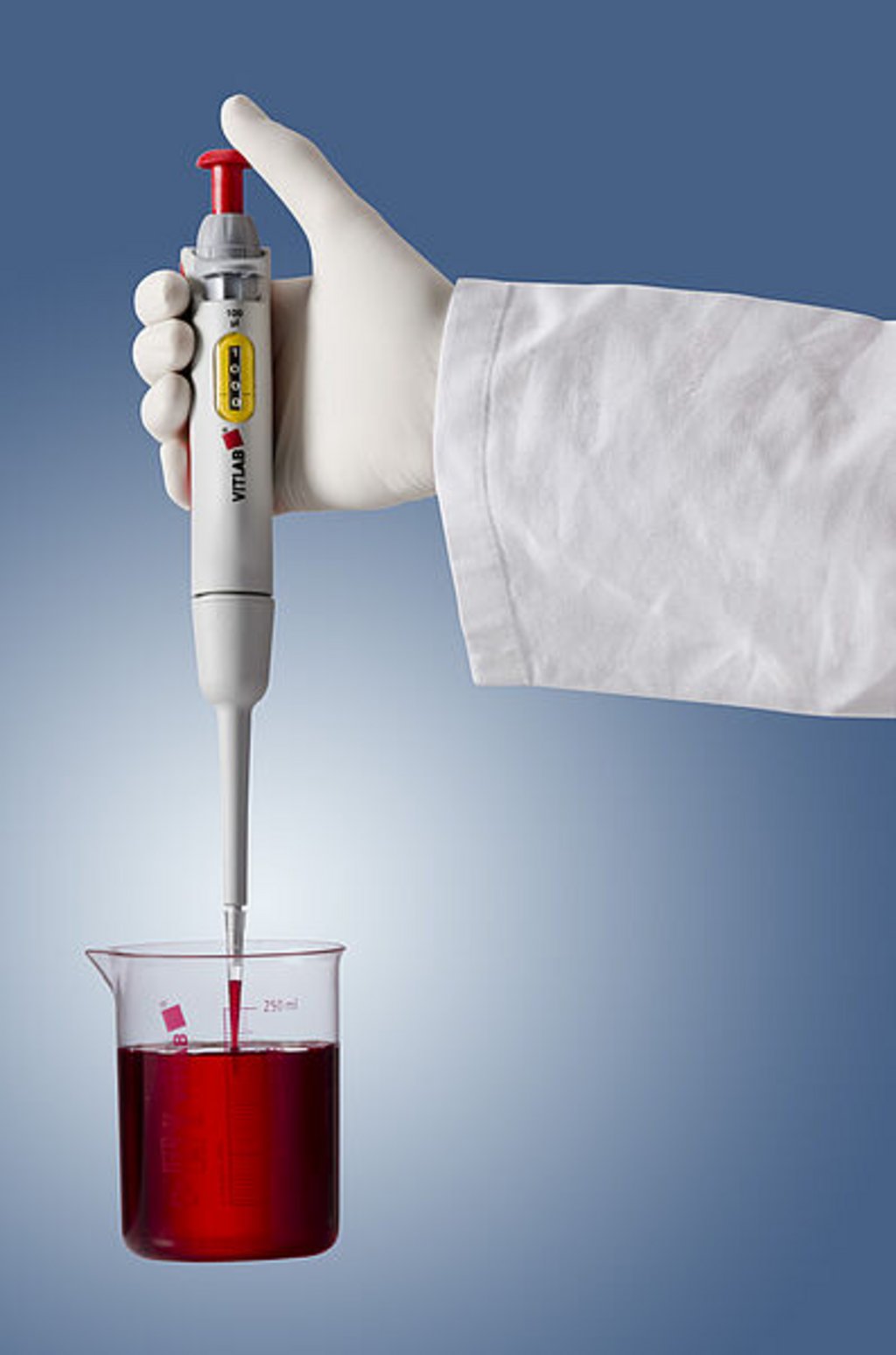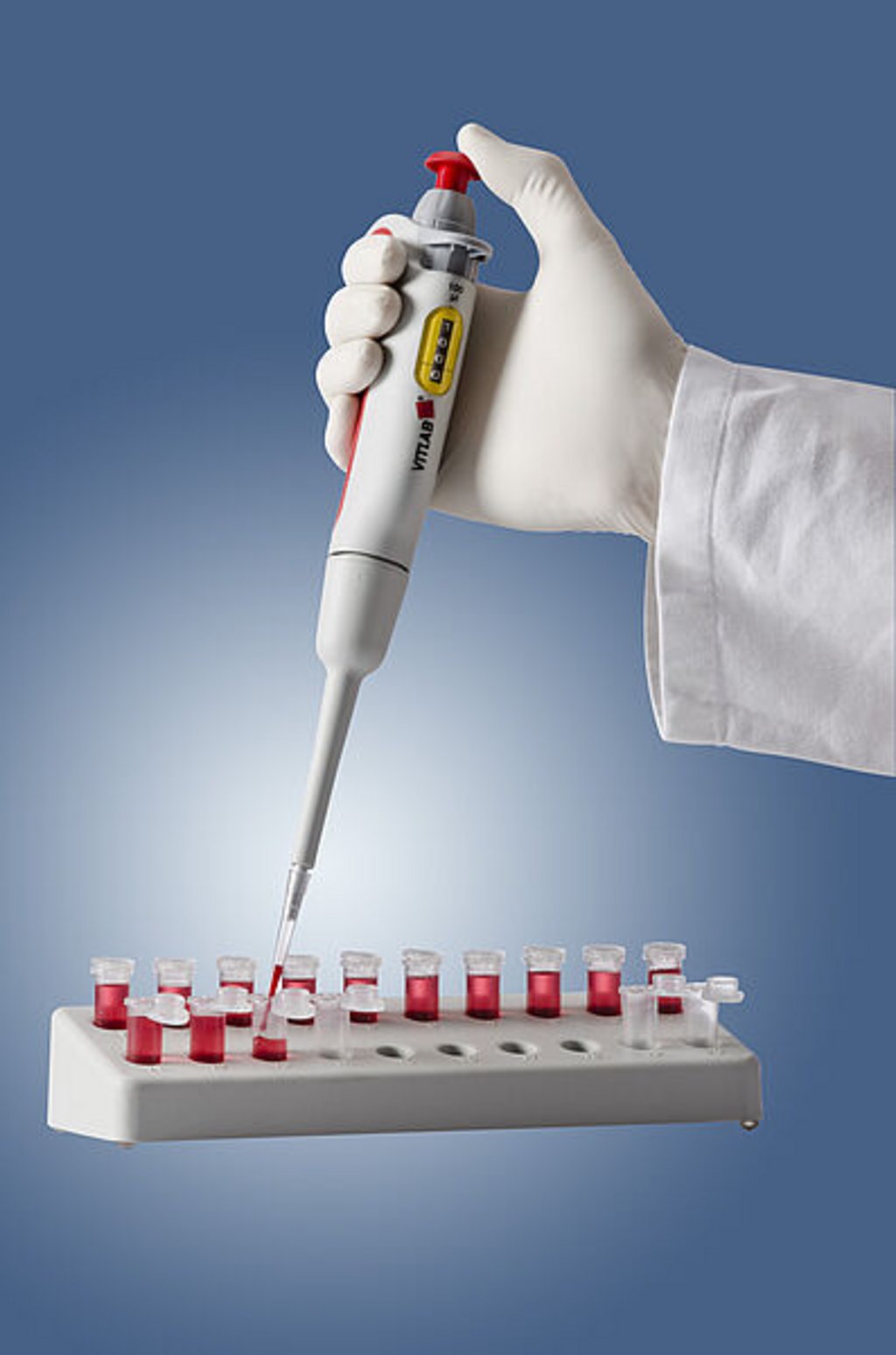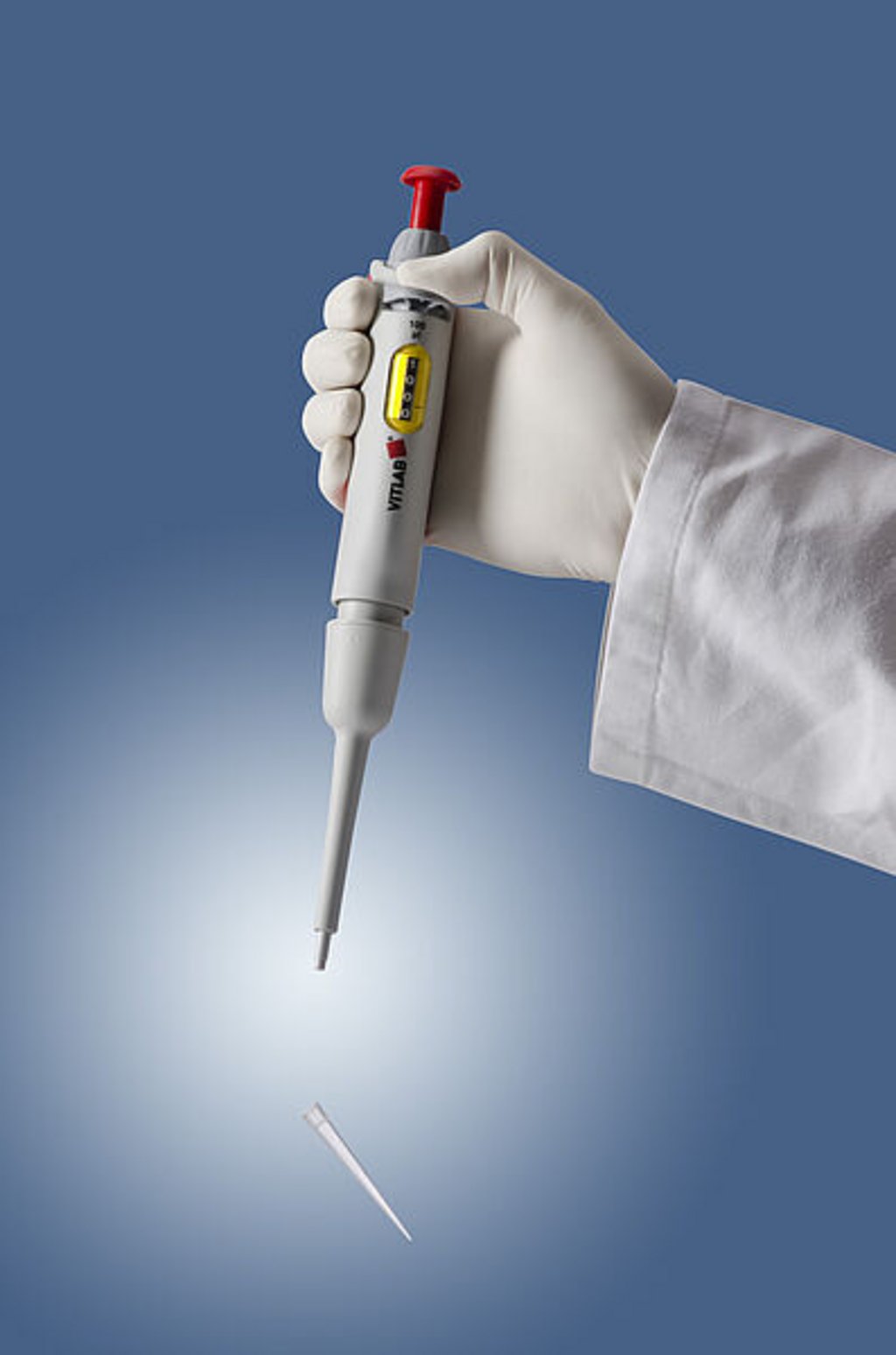Pipetting
Efficiency in variable pipetting
Handling of air-interface pipettes
Apirate Sample

- Adjust volume
- Use the correct tip(s) according to the volume range (Color-Code)
- Press the pipetting button to the first stop and keep the button pressed
- Immerse the pipette tip(s) 2 to 6 mm into the liquid (depending on volume)
- Let the pipetting button slide back slowly while holding the pipette in an upright position (the liquid will be aspirated)
Pipetting Sample

- Place the pipette tip(s) against the wall of the receiving vessel
- Press the pipetting button slowly and evenly down to the second stop (over-stroke) to empty the tip(s) completely
- Ensure while discharging the sample that the tip(s) are not immersed into the liquid that might be in the receiving vessel
- Wipe the pipette tip(s) against the receiving vessel wall over a distance of approx. 10 mm
Ejecting the Tip

- Keep the pipetting button pressed while removing the pipette from the receiving vessel
- Let the pipetting button slide back slowly
- Press the tip ejection key to remove the tip
- Correctly dispose of pipette tip
- Store the pipette in an upright position when not in use (VITLAB® bench top rack/ shelf mount)
Optimal pipetting
For exact and precise analytical results, the following points should be considered, independent of the pipetting technique:
- The best results are obtained with pipette tips that are recommended by the manufacturer, since only they have been checked for an optimal fit with the pipette.
- A second important factor that can influence the analytical result is the quality of the tip material. VITLAB® pipette tips are manufactured from high quality polypropylene.
- Pipette tips are intended for single-use only. Reuse and cleaning of used pipette tips should be avoided because it can influence accuracy and lead to cross-contamination of samples.
- The pipette should be held vertically while aspirating the sample because an increase in the angle of inclination can result in volume errors.
- To obtain optimal results, the immersion depth of the tip should only be a few millimetres (depending on volume).
- The air-interface between piston and sample should be kept as small as possible. The smaller the air-interface the higher is the accuracy of the result. The color-code helps with the selection of the fitting pipette tip.
Forward Pipetting

Reverse Pipetting
The reverse pipetting technique should be used to pipet viscous solutions, wetting solvents or media with high vapour pressure with air-interface pipettes. In contrast to forward pipetting, the reverse pipetting technique is as follows:
